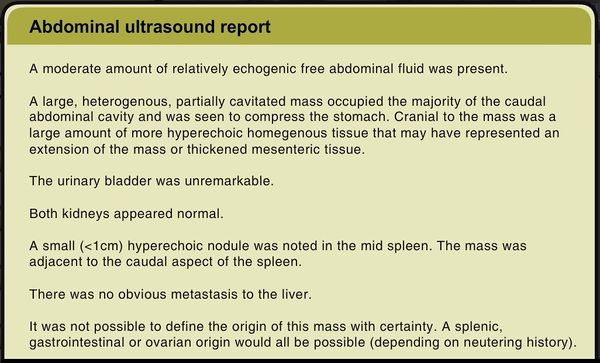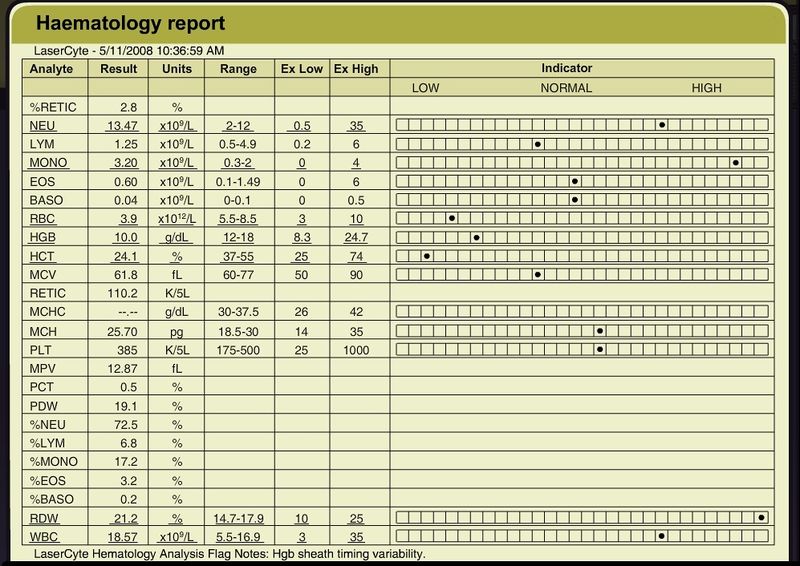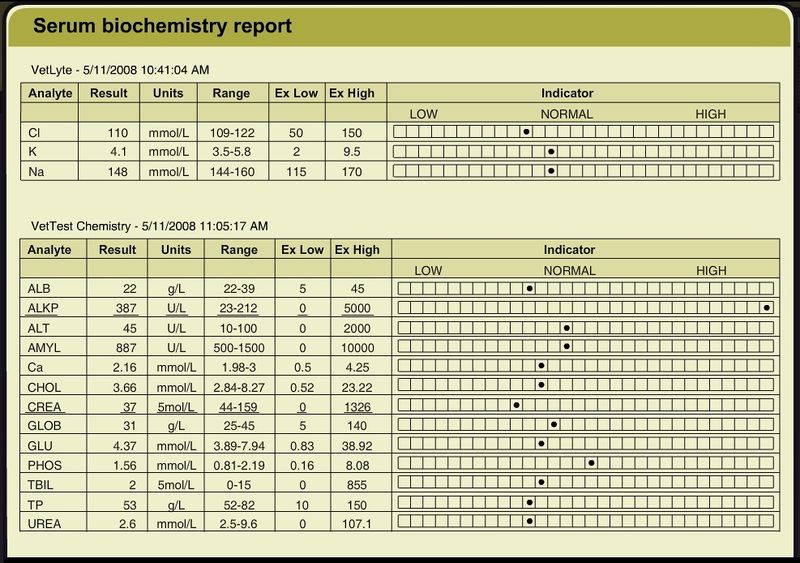Difference between revisions of "Maltese terrier cross with enlarged abdomen"
Jump to navigation
Jump to search
| Line 86: | Line 86: | ||
|- | |- | ||
| [[File:Case 22 biochemistry.jpg|800px]] | | [[File:Case 22 biochemistry.jpg|800px]] | ||
| + | |} | ||
| + | |||
| + | |||
| + | {| class="mw-collapsible mw-collapsed wikitable" | ||
| + | ! Blood donor qualities | ||
| + | |- | ||
| + | | a) ||healthy, receives yearly physical exam, CBC, UA, biochemistry | ||
| + | | b) ||not been the recipient of a transfusion | ||
| + | | c) ||over 25kg | ||
| + | | d) ||negative for DEA1.1 | ||
| + | | e) ||fully vaccinated, heartworm negative, dogs receiving heartworm prophylaxis | ||
| + | | f) ||screened for Ehrlichia and Babesia (in areas where these occur | ||
|} | |} | ||
<center><WikiQuiz | <center><WikiQuiz | ||
questionnumber="3" | questionnumber="3" | ||
| − | question="" | + | question="Your next tests are haematology and serum biochemistry. You give the option of referral for surgery but the clients decline. You are not sure what to expect at surgery so you hire a suction unit and electrocautery unit from a drug company. You ask the clients to bring in their friend's dog so you have a whole blood transfusion on hand if needed. What qualities should you look for in choosing a blood donor for your surgical patient? (Select from the table above.)" |
choice1="" | choice1="" | ||
choice2="" | choice2="" | ||
Revision as of 18:35, 3 October 2012
Signalment:
- 12-year-old female neutered Maltese Terrier cross
Presenting complaint:
- abdominal enlargement, lethargy, inappetance for 3 months. Your physical exam shows an obviously distended abdomen with a very large (>10 cm diameter) firm palpable abdominal mass, mucous membranes pink but paler than normal, periodontal disease. Otherwise clinical exam within normal limits, and she seems surprisingly alert and responsive. The clients say the abdominal enlargement has only happened in the past month.
100 |
|
1 |
What do you do next? |
| Abdominal ultrasound report |
|---|

|
| PCV and TP report |
|---|

|
| Urinalysis report |
|---|

|
2 |
Review the abdominal ultrasound report, the packed cell volume and total protein report and the urinalysis report. What do you do next? |
| Haematology report |
|---|

|
| Serum biochemistry report |
|---|

|
| Blood donor qualities | |||||||||||
|---|---|---|---|---|---|---|---|---|---|---|---|
| a) | healthy, receives yearly physical exam, CBC, UA, biochemistry | b) | not been the recipient of a transfusion | c) | over 25kg | d) | negative for DEA1.1 | e) | fully vaccinated, heartworm negative, dogs receiving heartworm prophylaxis | f) | screened for Ehrlichia and Babesia (in areas where these occur |
3 |
Your next tests are haematology and serum biochemistry. You give the option of referral for surgery but the clients decline. You are not sure what to expect at surgery so you hire a suction unit and electrocautery unit from a drug company. You ask the clients to bring in their friend's dog so you have a whole blood transfusion on hand if needed. What qualities should you look for in choosing a blood donor for your surgical patient? (Select from the table above.) |
4 |
|
5 |
|